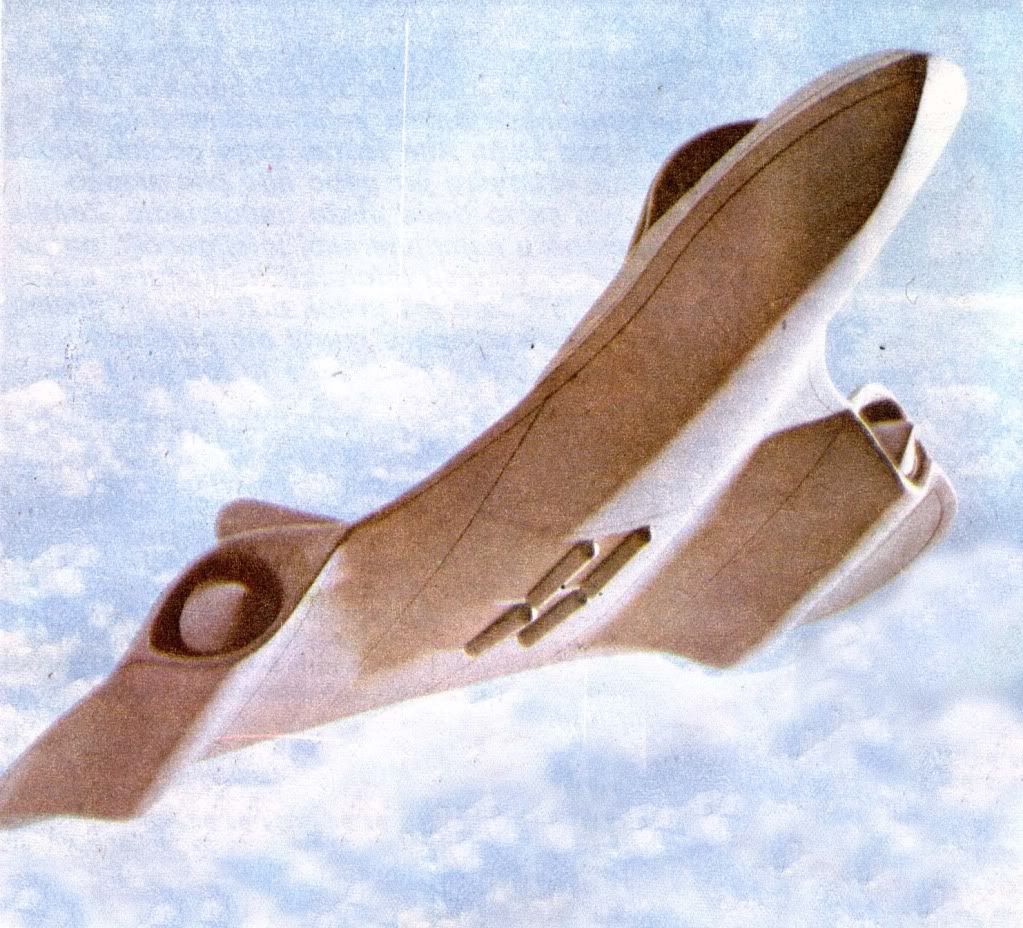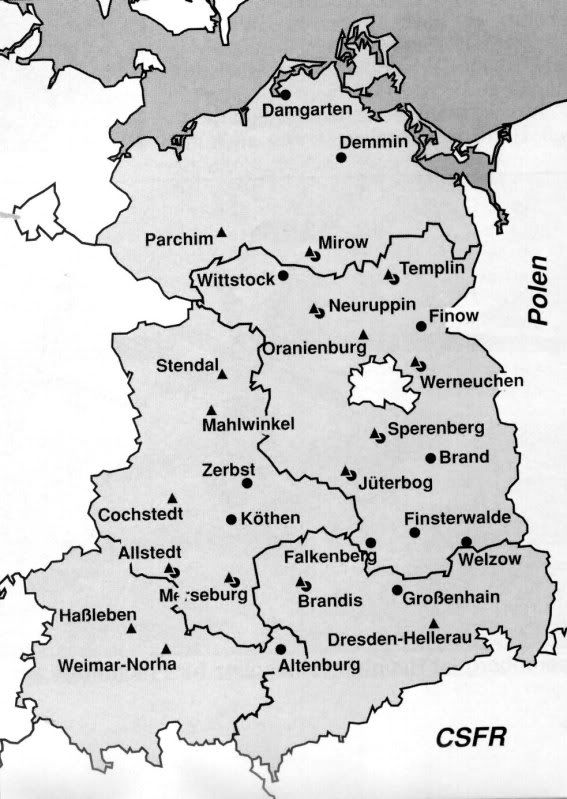I remember reading somewher that the XB-70 (beautiful machine by the way) was worth 3 times it’s weight in gold ! I wonder if there is some truth in this… [FONT=Times New Roman][/FONT]
[FONT=Times New Roman][/FONT]
HISTORY: [FONT=Times New Roman][/FONT]
First Flight [FONT=Times New Roman][/FONT]
21 September 1964 [FONT=Times New Roman][/FONT]
Service Entry [FONT=Times New Roman][/FONT]
did not enter service [FONT=Times New Roman][/FONT]
CREW: [FONT=Times New Roman][/FONT]
(XB-70A) two: pilot, co-pilot
(B-70A) four: pilot, co-pilot, navigator/bombardier, defensive systems officer [FONT=Times New Roman][/FONT]
ESTIMATED COST: [FONT=Times New Roman][/FONT]
$700 million (prototype) [FONT=Times New Roman][/FONT]
AIRFOIL SECTIONS: [FONT=Times New Roman][/FONT]
Wing Root [FONT=Times New Roman][/FONT]
0.30 Hex (Mod) [FONT=Times New Roman][/FONT]
Wing Tip [FONT=Times New Roman][/FONT]
0.70 Hex (Mod) [FONT=Times New Roman][/FONT]
DIMENSIONS: [FONT=Times New Roman][/FONT]
Length [FONT=Times New Roman][/FONT]
185.83 ft (56.69 m) without pitot tube
192.17 ft (58.63 m) with pitot tube [FONT=Times New Roman][/FONT]
Wingspan [FONT=Times New Roman][/FONT]
105.00 ft (32.03 m) [FONT=Times New Roman][/FONT]
Height [FONT=Times New Roman][/FONT]
30.75 ft (9.38 m) [FONT=Times New Roman][/FONT]
Wing Area [FONT=Times New Roman][/FONT]
6,298 ft² (586.2 m²) [FONT=Times New Roman][/FONT]
Canard Area [FONT=Times New Roman][/FONT]
415.6 ft² (38.68 m²) [FONT=Times New Roman][/FONT]
WEIGHTS: [FONT=Times New Roman][/FONT]
Empty [FONT=Times New Roman][/FONT]
300,000 lb (136,365 kg) [FONT=Times New Roman][/FONT]
Normal Takeoff [FONT=Times New Roman][/FONT]
534,700 lb (243,045 kg) [FONT=Times New Roman][/FONT]
Max Takeoff [FONT=Times New Roman][/FONT]
542,000 lb (246,365 kg) [FONT=Times New Roman][/FONT]
Fuel Capacity [FONT=Times New Roman][/FONT]
internal: unknown
external: unknown [FONT=Times New Roman][/FONT]
Max Payload [FONT=Times New Roman][/FONT]
20,000 lb (9,070 kg) planned for production B-70 [FONT=Times New Roman][/FONT]
PROPULSION: [FONT=Times New Roman][/FONT]
Powerplant [FONT=Times New Roman][/FONT]
six General Electric J-93 afterburning turbojets [FONT=Times New Roman][/FONT]
Thrust [FONT=Times New Roman][/FONT]
180,000 lb (800.71 kN) [FONT=Times New Roman][/FONT]
PERFORMANCE: [FONT=Times New Roman][/FONT]
Max Level Speed [FONT=Times New Roman][/FONT]
at altitude: 2,056 mph (3,310 km/h) at 73,000 ft (22,270 m), Mach 3.1
at sea level: unknown
cruise speed: 2,000 mph (3,200 km/h) at 72,000 ft (21,965 m), Mach 3.0 [FONT=Times New Roman][/FONT]
Initial Climb Rate [FONT=Times New Roman][/FONT]
unknown [FONT=Times New Roman][/FONT]
Service Ceiling [FONT=Times New Roman][/FONT]
77,350 ft (23,600 m) [FONT=Times New Roman][/FONT]
Range [FONT=Times New Roman][/FONT]
typical: 3,725 nm (6,900 km) [XB-70]
typical: 6,600 nm (12,230 km) [B-70]
ferry: unknown[FONT=Times New Roman][/FONT]
g-Limits [FONT=Times New Roman][/FONT]
unknown [FONT=Times New Roman][/FONT]
ARMAMENT: [FONT=Times New Roman][/FONT]
Gun [FONT=Times New Roman][/FONT]
none [FONT=Times New Roman][/FONT]
Stations [FONT=Times New Roman][/FONT]
production model designed with 2 internal bomb bays [FONT=Times New Roman][/FONT]
Air-to-Air Missile [FONT=Times New Roman][/FONT]
none [FONT=Times New Roman][/FONT]
Air-to-Surface Missile [FONT=Times New Roman][/FONT]
none [FONT=Times New Roman][/FONT]
Bomb [FONT=Times New Roman][/FONT]
up to 14 nuclear bombs planned [FONT=Times New Roman][/FONT]
Other [FONT=Times New Roman][/FONT]
none [FONT=Times New Roman][/FONT]
KNOWN VARIANTS: [FONT=Times New Roman][/FONT]
XB-70A-1 [FONT=Times New Roman][/FONT]
First prototype that was capable of only Mach 2.5 due to structural and aerodynamic limitations [FONT=Times New Roman][/FONT]
XB-70A-2 [FONT=Times New Roman][/FONT]
Second prototype with a redesigned wing, structural improvements, and improved hydraulics allowing flight at Mach 3, vehicle was lost after an in-flight collision [FONT=Times New Roman][/FONT]
XB-70A-3 [FONT=Times New Roman][/FONT]
Proposed third prototype, cancelled during construction [FONT=Times New Roman][/FONT]
B-70A [FONT=Times New Roman][/FONT]
Proposed production model; 200 were to be built, cancelled [FONT=Times New Roman][/FONT]
RS-70A [FONT=Times New Roman][/FONT]
Proposed reconnaissance model; 150 were to be built, cancelled [FONT=Times New Roman][/FONT]
KNOWN OPERATORS: [FONT=Times New Roman][/FONT]
United States (US Army Air Force)
United States (NASA) [FONT=Times New Roman][/FONT]











